Madadreferencearchive - Just A Reference
More Posts from Madadreferencearchive and Others


wake up babe, new reason to ditch FANDOM/Wikia just dropped
![Zelda Wiki twitter:
Fandom refused to take this wiki down after we returned to independence and now it looks like they are using generative A.I. for "quick answers" which are spreading misinformation.
Please stop using Fandom. We do not approve of our past work being used like this.
[Screenshot of FANDOM Zelda Wiki with Quick Answers feature]](https://64.media.tumblr.com/55df791ecf5b885002a8ef164826ff07/cca355bad3b8715c-54/s500x750/5d7627c400c21ccfd92e36a8de7737d0b96b702a.jpg)
![Zelda Wiki twitter:
IN one case, it provides "answers" for a completely unrelated franchise.
[Screenshot of FANDOM Zelda Wiki with Quick Answers feature]](https://64.media.tumblr.com/dba0adad0a30f2d590ae05c4f7c0a839/cca355bad3b8715c-7d/s500x750/53137cab0b665a2309be4c05cefe2186b22d7186.jpg)
Previosuly
corporate monster infested with ads which devoured Gamepedia and other companies (feat me on their shit policies, SEO and migration process)
turning entire articles into ads if paid enough
limited functionality preventing admins to even fight vandalism
merging and removing of LGBT+ wikis (and forced domain change for educational [think serious] wikis to "fandom")
official wiki status has no meaning in controlling shit
very much censorship (same good ol' allergy to adult stuff)
gets paid by US Navy to advertise their events (one, two)
Alternative free wiki hostings (aka wiki farms)
Miraheze - started in 2015, non-commercial - no ads and runs on donations, wide array of MediaWiki features, wide array of allowed types of wikis and content, much autonomy for projects, custom domain and private wiki options
wiki.gg - started in 2022 by former Gamepedia staff, limited to video games, accent on involvement of game devs and thus hosting official wikis, has ads for anons (but only of games having wikis here)
Telepedia - started in 2022, limited to entertainment (although might allow other themes upon review), has ads for anons, replicates Miraheze structure
WikiTide - started in 2023, no ads and runs on donations (but also tied w/ premium version called WikiForge), largely replicates Miraheze but has stricter content policies, custom domain option
Other free options I'm aware of are either too limited in allowed content or are very outdated/unstable in technical department to recommend here (or in case of Neoseeker - I'm completely unfamiliar with it, and can't say anything about it), but you still can check them out, alongside paid hostings, on this MediaWiki page.
If you (or your community) are brave and dedicated enough you can go with self-hosted MediaWiki instance (aka independent hosting), like JoJo Wiki (who started on Wikia and succeed at overtaking the SEO) or NIWA wikis. This option, of course, requires funding and technical knowledge, but it's still very much possible.
How to find existing alternative/independent wikis
try to use "-fandom" filter for search query in Google, or use other search engines like Bing or DuckDuckGo
Indie Wiki Buddy browser extension - it modifies search engine results and performs redirects based on its centralized list of independent wikis; a new indie wiki has to be requested/submitted to get added [ Firefox / Chrome ]
Redirect to wiki.gg browser extension - same as IWB but for wikis moved to wiki.gg (as I understand, works automatically without dedicated listing) [ Firefox / Chrome ]
(simple) Redirector browser extension - in case the wiki is neither on IWB or wiki.gg, and it doesn't filter out search results - only performs redirect on whatever you get; a redirect has to be set manually - see this tutorial [ Firefox / Chrome ]
Fuck FANDOM, support real people, support indie wikis

Decorative front cover taken from ‘The Art of Heraldry’ by Arthur Charles Fox-Davies.
Published 1904 by T.C. & E.C. Jack.
Boston Public Library.
archive.org
AI disturbance overlays for those who don't have Ibis paint premium. found them on tiktok
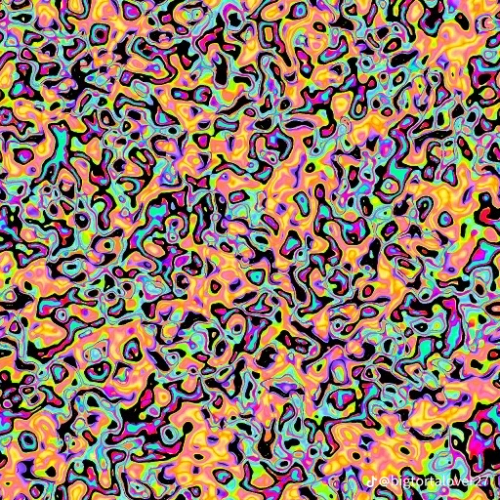
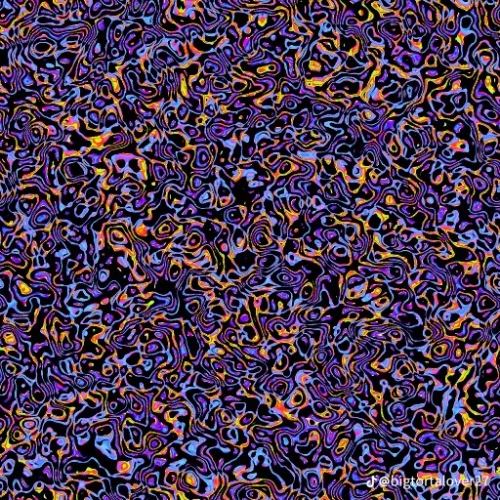
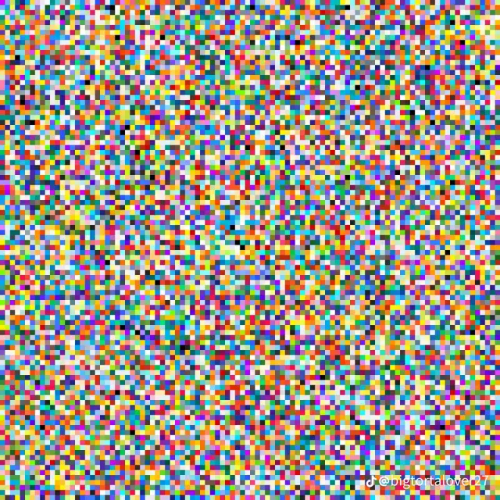
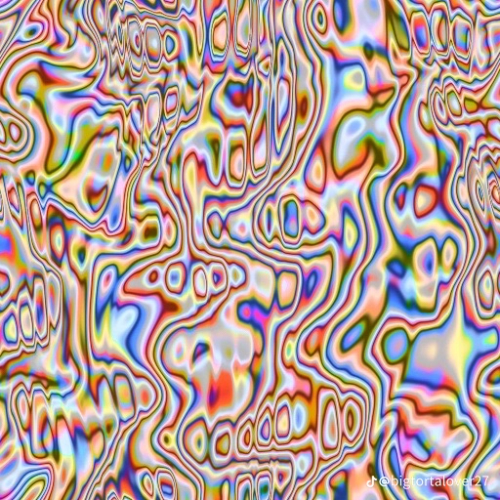
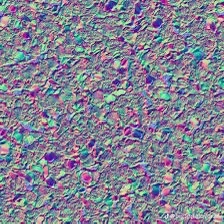
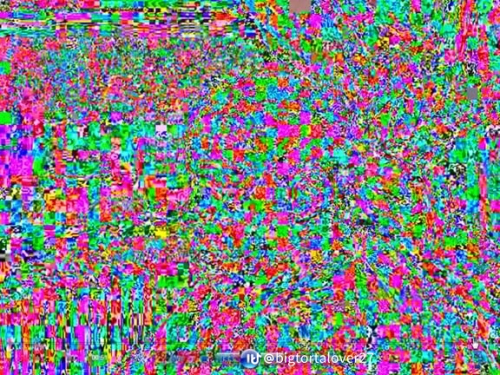
RIP Joann, now what?
I wanted to make a post I could copy and paste and or link when I see folks asking where to buy fabrics when Joann is gone. I sew a lot, generally between 100-200 items a year and I don't do it on a big budget. Stores are not in a particular order.
Notions:
Wawak.com - start here, mostly stay here. Wawak is a supplier for professional sewing businesses and have the prices that show it. I will not pay for gutermann Mara 100 anywhere else. I buy buttons, tools, thread, and most elastic here.
Stitch Love Studio - this is where I buy lingerie supplies https://www.etsy.com/shop/StitchLoveStudio?ref=yr_purchases
Fabric:
Fabric Mart - this is one where you want to sign up for emails and never buy unless its on sale. They run different sales every day and they rotate. Mostly deadstock fabrics but I buy more from here than anywhere else. Fantastic customer service and if you watch you can get things like $6 wool suiting or $4 cotton jersey. https://fabricmartfabrics.com/
Fabrics-Store - again, buy the sales not the full price. Sign up for the emails but redirect them to a folder because it is TOO MANY. They stock linen or good but not amazing quality. https://www.fabrics-store.com/
Purple Seamstress - This is where I buy my solid cotton lycra jersey. They have other things, but the jersey is what I'm here for. Inexpensive and very good quality. If you ask she will mail you a swatch card for the solids. https://purpleseamstressfabric.com/
LA Finch - deadstock fabrics with a fantastic remnant selection https://lafinchfabrics.myshopify.com/
Califabrics - mix of deadstock and big brands, easy to navigate and always seem to have good denim in stock. https://califabrics.com/
Boho Fabrics - good variety, nice bundles. I have also gotten some really great trims from here. https://www.bohofabrics.com/
Firecracker Fabrics - garment and quilting fabrics, really nice selection and great sale section. I've bought $5 yard quilting cottons here several times. https://www.firecrackerfabrics.com/
Hancock's of Paducah - Quilting fabric and some limited garment fabric. AMAZING sale section. Do not sleep on the sale section. This is my first stop when buying quilting fabrics. Usually the last stop too. Not particularly speedy shipping. https://www.hancocks-paducah.com/
Itokri - This is something a little different. Itokri is an Indian business with incredible traditional fabrics. Shipping to the US is expensive, but the fabric is so inexpensive it evens out. I generally end up paying like $30 for shipping. Beautiful ikat and block prints. https://itokri.com/
Miss Matatabi - this is a little treat. This isn't where you go to save money, but there are so many beautiful things in this shop. Ships from Japan incredibly quickly. https://shop.missmatatabi.com/
Lucky Deluxe - Craft thrift store, always has an incredible selection and fantastic customer service. I need to close the tab fast because I never go to this website without finding something I need. https://www.luckydeluxefabrics.com/
Swanson's - the OG of online craft thrift stores, but I find their website harder to navigate. https://www.swansonsfabrics.com
Honorary Mentions: I haven't shopped at these places yet but I have had them recommended and likely will at some point.
A Thrifty Notion - https://athriftynotion.com/
Creative Closeouts - https://creativecloseoutsfabric.com/ being rebranded to sewsnip.com on March 1 - quilting deadstock
Hawthorne Supply Co. - I just got this rec and I think I need to not look too closely or I'm going to slip with my debit card. https://www.hawthornesupplyco.com/
This is not an exhaustive list of everywhere you can buy fabric, or even a full list of where I shop. There are SO many options out there in the world. You also need to think outside the fabric store box. I thrift men's shirt fabrics for quilts and sheets for backing fabric. I don't do a ton of in person thrifting and my local stores don't get a lot of craft materials but every thrift store is its own universe and reflects the community it is in. Go out and find something cool.
Oh and final note: Don't shop at Hobby Lobby.
>100,000 notes - mass market slop
10,000 notes - well executed crowd pleaser
1,000 notes - cult classic
100 notes - uncompromising avant-garde art for those of discerning taste
10 notes - misunderstood genius that the culture is not yet ready for
1 note - direct admission of suicidal ideation

I have an essay brewing in my head constantly about lawns. Which, well, unsurprising, since I post about how I hate lawns all the time, but I think the "lawn" and "landscaping" centered way of thinking about Places Outside is a Bigger Thing that Connects to Other Things
(What isn't? Having ideas about concepts is always like this.)
I will introduce my ideas by a situation where they apply: Sometimes life-forms mimic other life forms. One form of mimicry is called Vavilovian mimicry, where weed species in crops grown by humans evolve over time to be more similar to the crops.
Vavilovian mimicry basically helps weeds survive because the weeds are adapted to the care-taking regimen of the crops, and because the human caretakers of the crop can have a hard time telling them apart, which means they might say "Ehh...I'll wait until it grows up so I can be sure I'm not pulling up my crop."
I think there's something similar at work among flower gardens and landscaping...but it's different.
Regular people don't know the name of every plant that might possibly grow in their flower beds, and they often pull up plants they don't know just because they don't know them. They sometimes say they pull up a plant that "looks weedy" or "looks like a weed."
I think to myself...what does "weedy" look like?
This question collided unexpectedly in my brain with an insight I had about invasive species that I could not explain.
I have to get rid of a lot of Callery pear, wintercreeper, honeysuckle, burningbush, privet, English ivy, and other plants that are invasive where I live. And strangely- many invasive plants look similar in ways they don't share with very many native species. They tend to have small, round or squat, glossy leaves, and they tend to have a very dense growth habit.
I can think of several possible explanations: Maybe these species thrive in North America today because of the loss of controlled burning, but their characteristics look so distinct next to native species because they relate to things that would make a species fire-intolerant? This doesn't seem quite right, since it doesn't predict level of fire-adaptedness in native species.
Another explanation is better: they were selected for these traits by humans for their usefulness in landscaping. Dense growth habit would be useful for creating hedges or ground covers. This is why many invasives were originally planted, right? And small leaves might feel or be perceived as less "messy" when they fall.
But I think this is a clue to something else going on. What does "weedy" look like?
Some plants go on one side of "weeds vs. flowers" and some on the other, and it's almost totally arbitrary...so how do gardeners make the call so decisively?
I think about the commonest "landscaping" plants- Knock Out roses, hostas, petunias, begonias, boxwoods and so on- they share a lot of the characteristics mentioned above. Shiny or at least smooth, typically small and squat leaves, dense and compact growth habit.
Then I think about some of the commonest and most important "weedy" native wildflowers, such as goldenrods, asters, milkweeds, Joe-Pye weed, ironweed, sunflower. They all differ from the above in at least one striking way. Mostly, they have hairy leaves and stems, long and thin leaves, and a tendency to grow up tall before blooming. Milkweed has smooth leaves, but its leaves are long and very big. Hmm...
And I think I can guess where this is coming from.
Landscaping and garden designs often look like this


See how the plants are drawn and arranged to cover a space in two dimensions, mostly not overlapping with each other? This is very easy to plan and design. And those common landscaping plants I mentioned—hostas, Knock Out roses, boxwoods, and so on—are very good at acting just like a two-dimensional representation of them does. Just look, you can see them:

Now look at those important native wildflowers I mentioned:
Goldenrod

Ironweed

Milkweed

These guys don't fill much space in a horizontal plane, they go straight up. They don't exclude other plants from very much space either. Plants could grow under them and among them. So they're not very good for "filling up" space, and their opener, lankier, less dense shape doesn't do a good job at blocking other plants from growing.
In a garden of North American prairie- or meadow-adapted plants, the plants wouldn't exclude each other and stay within their designated spots because they're evolved to intermix with a great variety of plants.

"Separateness" is a big part of the typical "landscape" aesthetic. These plants are very neatly separate from each other. This is what looks "neat" and well-kept to us...the opposite of "weedy."
This could mean our garden and flower beds are affected by a selective pressure a lot like the Vavilovian mimicry situation. But instead of weeds being selected to look like intentionally grown plants, the intentionally grown plants are being selected to look different from weeds.
The subtle difference makes perfect sense. In a field, the rule is "leave the plant there if you're unsure" because that's your food. In a flower bed, the rule is "get rid of the plant if you're unsure" because having weeds is more aesthetically unacceptable than having blank space.
The point is: Ecology needs to be a big part of gardening and landscaping, because you are DOING ecology. Even if you don't know the evolutionary principles, you're acting them out.
Just like the ineffable preferences of female birds give the males weird elaborate display structures, ineffable aesthetic "senses" that govern our "built" world slowly turn it into something weird.
-
 sideoftheangels1 reblogged this · 1 week ago
sideoftheangels1 reblogged this · 1 week ago -
 miss-m-winks liked this · 1 week ago
miss-m-winks liked this · 1 week ago -
 nyankomusume liked this · 1 week ago
nyankomusume liked this · 1 week ago -
 bardic-tales reblogged this · 1 week ago
bardic-tales reblogged this · 1 week ago -
 bardic-tales liked this · 1 week ago
bardic-tales liked this · 1 week ago -
 roriksavant reblogged this · 1 week ago
roriksavant reblogged this · 1 week ago -
 2instant-blog liked this · 2 weeks ago
2instant-blog liked this · 2 weeks ago -
 noisax-jazzostrial-fractamental liked this · 2 weeks ago
noisax-jazzostrial-fractamental liked this · 2 weeks ago -
 thesleepyfrog reblogged this · 2 weeks ago
thesleepyfrog reblogged this · 2 weeks ago -
 thesleepyfrog liked this · 2 weeks ago
thesleepyfrog liked this · 2 weeks ago -
 gothicdragonqueen liked this · 2 weeks ago
gothicdragonqueen liked this · 2 weeks ago -
 dandybobandy liked this · 2 weeks ago
dandybobandy liked this · 2 weeks ago -
 turquoiseorchid liked this · 2 weeks ago
turquoiseorchid liked this · 2 weeks ago -
 waywardstoryenthusiast reblogged this · 2 weeks ago
waywardstoryenthusiast reblogged this · 2 weeks ago -
 sunneflower reblogged this · 2 weeks ago
sunneflower reblogged this · 2 weeks ago -
 kerres reblogged this · 2 weeks ago
kerres reblogged this · 2 weeks ago -
 laidy-raine reblogged this · 2 weeks ago
laidy-raine reblogged this · 2 weeks ago -
 laidy-raine liked this · 2 weeks ago
laidy-raine liked this · 2 weeks ago -
 softcannoli reblogged this · 2 weeks ago
softcannoli reblogged this · 2 weeks ago -
 cactalious liked this · 2 weeks ago
cactalious liked this · 2 weeks ago -
 roastpatato reblogged this · 2 weeks ago
roastpatato reblogged this · 2 weeks ago -
 drakalexys liked this · 3 weeks ago
drakalexys liked this · 3 weeks ago -
 budd-ie liked this · 3 weeks ago
budd-ie liked this · 3 weeks ago -
 neonphoenix liked this · 3 weeks ago
neonphoenix liked this · 3 weeks ago -
 ejbcya liked this · 3 weeks ago
ejbcya liked this · 3 weeks ago -
 firefutte reblogged this · 3 weeks ago
firefutte reblogged this · 3 weeks ago -
 crimson-thorns reblogged this · 3 weeks ago
crimson-thorns reblogged this · 3 weeks ago -
 bean-of-cheese liked this · 3 weeks ago
bean-of-cheese liked this · 3 weeks ago -
 cassiekins reblogged this · 3 weeks ago
cassiekins reblogged this · 3 weeks ago -
 passerea liked this · 3 weeks ago
passerea liked this · 3 weeks ago -
 fauxrealthough reblogged this · 3 weeks ago
fauxrealthough reblogged this · 3 weeks ago -
 discars reblogged this · 3 weeks ago
discars reblogged this · 3 weeks ago -
 noxwordart liked this · 3 weeks ago
noxwordart liked this · 3 weeks ago -
 curvethemoonshine reblogged this · 3 weeks ago
curvethemoonshine reblogged this · 3 weeks ago -
 eye-of-the-silver-dragon liked this · 3 weeks ago
eye-of-the-silver-dragon liked this · 3 weeks ago -
 smoose liked this · 3 weeks ago
smoose liked this · 3 weeks ago -
 carmine liked this · 3 weeks ago
carmine liked this · 3 weeks ago -
 slow-fawn reblogged this · 3 weeks ago
slow-fawn reblogged this · 3 weeks ago -
 kickerofelves reblogged this · 3 weeks ago
kickerofelves reblogged this · 3 weeks ago -
 goldnwlf reblogged this · 3 weeks ago
goldnwlf reblogged this · 3 weeks ago -
 goldnwlf liked this · 3 weeks ago
goldnwlf liked this · 3 weeks ago -
 loscharlitos reblogged this · 3 weeks ago
loscharlitos reblogged this · 3 weeks ago -
 loscharlitos liked this · 3 weeks ago
loscharlitos liked this · 3 weeks ago -
 noro-noro-noro liked this · 3 weeks ago
noro-noro-noro liked this · 3 weeks ago -
 royal-viridian reblogged this · 3 weeks ago
royal-viridian reblogged this · 3 weeks ago -
 royal-viridian liked this · 3 weeks ago
royal-viridian liked this · 3 weeks ago -
 mig-murgthenurg reblogged this · 3 weeks ago
mig-murgthenurg reblogged this · 3 weeks ago -
 mig-murgthenurg liked this · 3 weeks ago
mig-murgthenurg liked this · 3 weeks ago -
 teatimeat221b reblogged this · 3 weeks ago
teatimeat221b reblogged this · 3 weeks ago

Hey my main is mad-ad I use this side blog to keep posts I want to save handy and my drafts clear
76 posts



